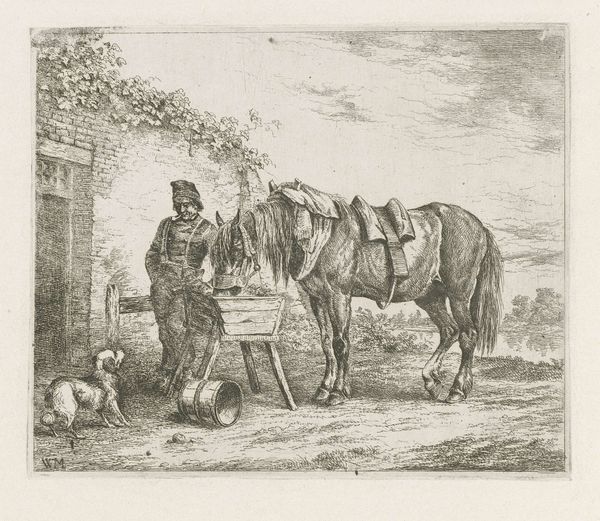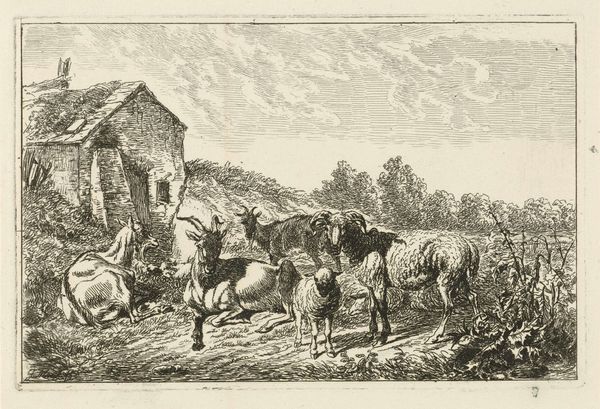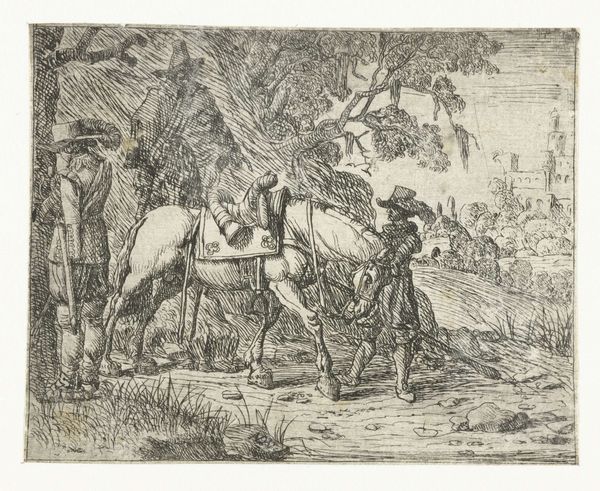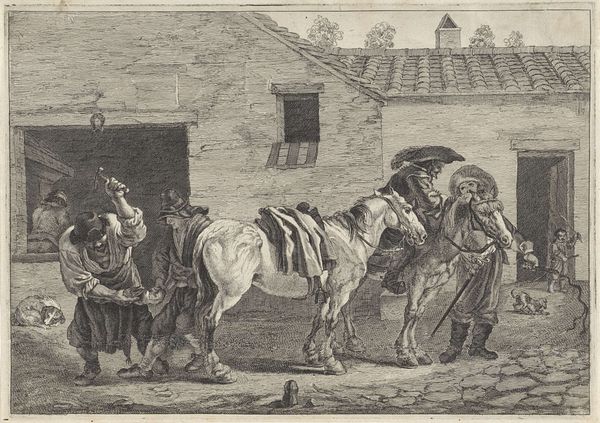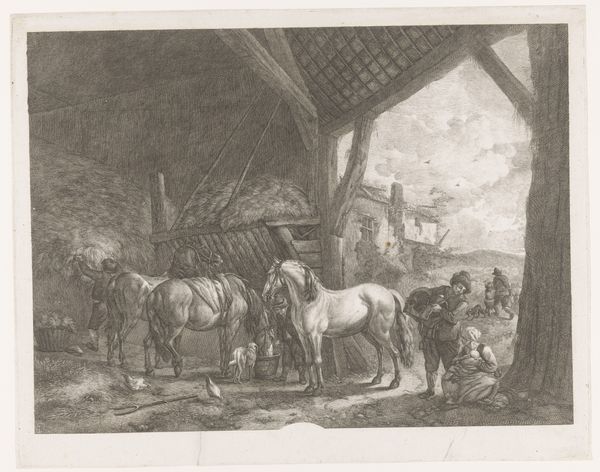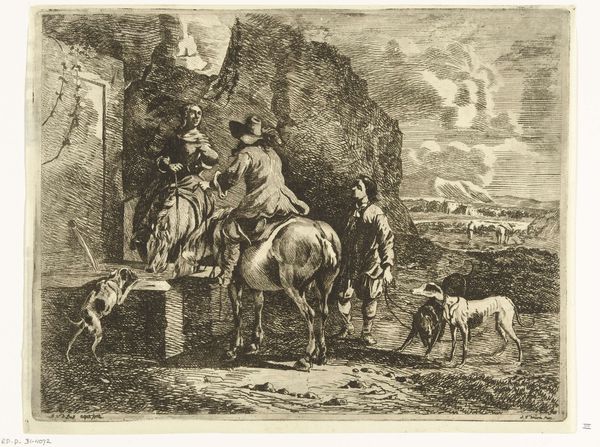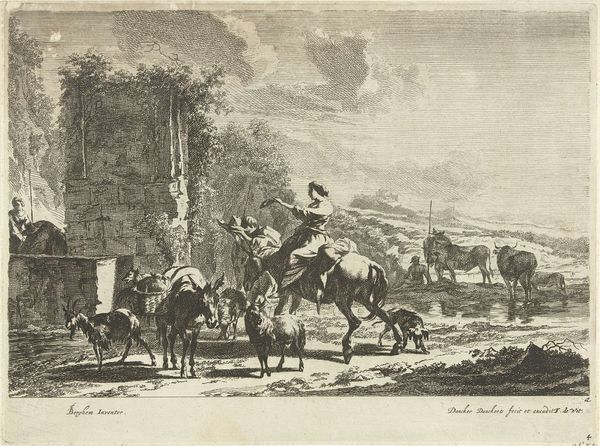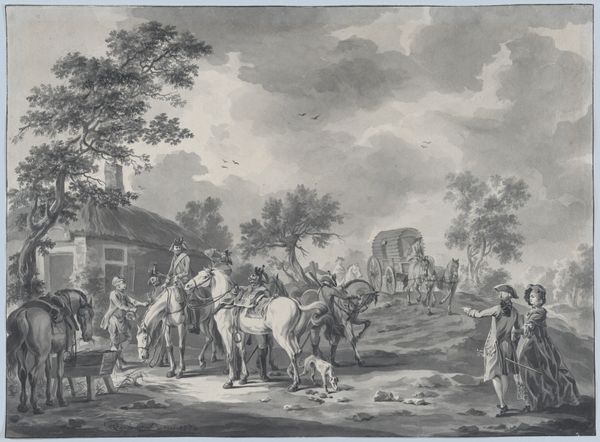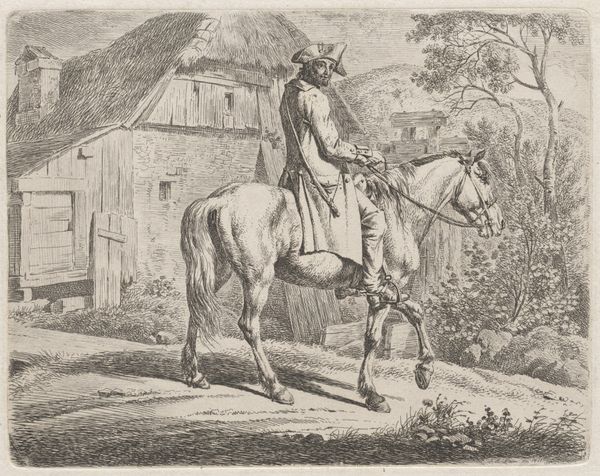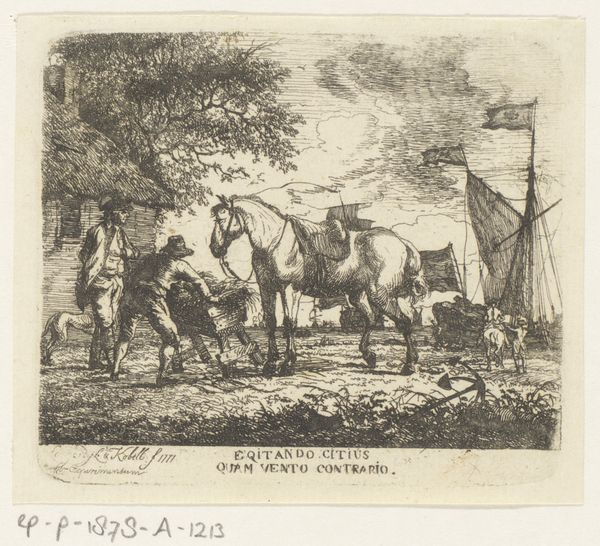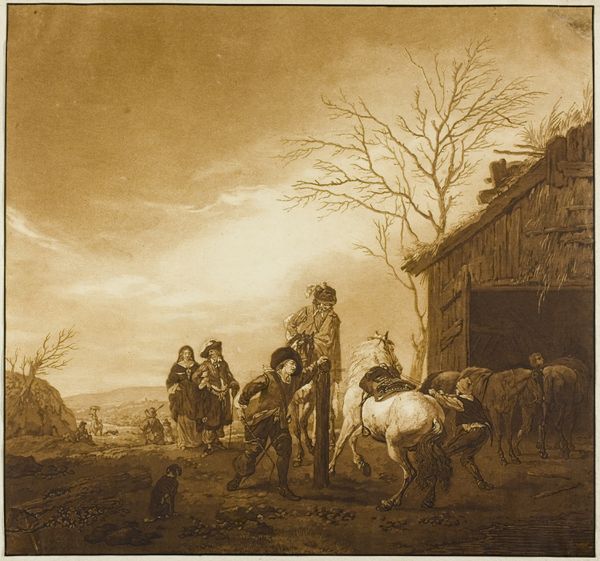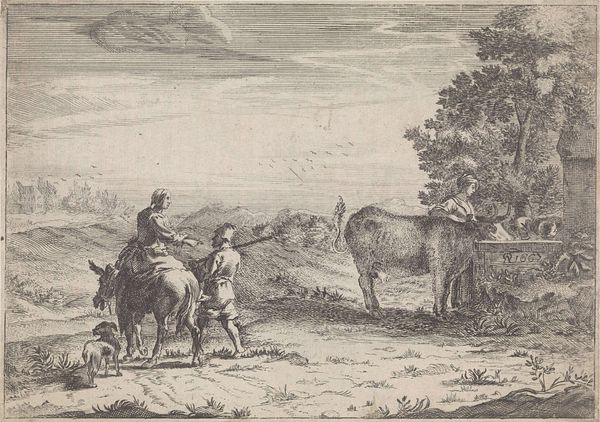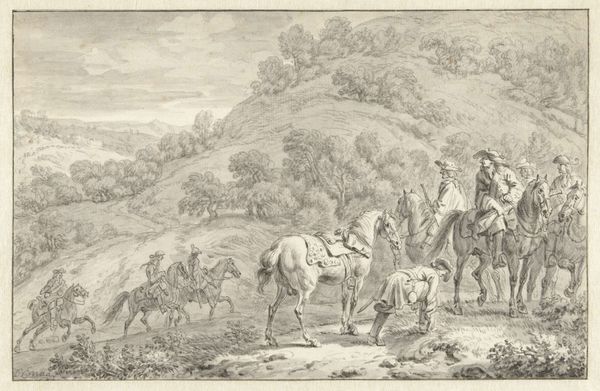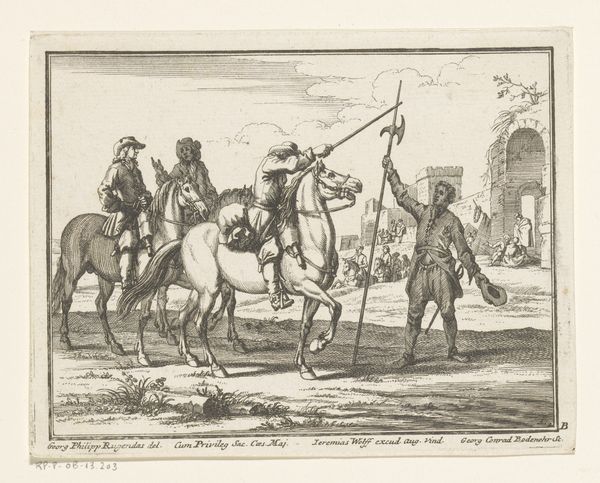
print, engraving
#
dutch-golden-age
# print
#
landscape
#
figuration
#
genre-painting
#
engraving
Dimensions: height 314 mm, width 433 mm
Copyright: Rijks Museum: Open Domain
Curator: Today, we’re looking at “Jagers,” or "Hunters," an engraving by Cornelis Visscher created sometime between 1638 and 1658. Editor: Immediately, I feel like I'm looking at a theatrical production, everything so deliberately staged in grayscale. A lone horseman pauses by what seems like a very disheveled hunting lodge and there is an expectant mood about him. Curator: That anticipation is wonderfully captured! Visscher's genius lies in elevating a simple genre scene to something quite poignant. This wasn’t simply about documenting hunting; prints like these spoke to evolving ideas about land use, class, and social hierarchies in the Dutch Golden Age. Editor: I notice that the dogs really grab my attention; it's a whole community around this place, seemingly indifferent to this rider that might be of an elevated stature. This piece tells me about both control and community. Curator: Absolutely! Think about the tradition of the hunt itself. The hunter here, centrally placed and on horseback, would typically symbolize authority, but that is undercut here by a sense of disorder. He has only one visible dog following him. His status feels precarious here! Editor: The whole scene walks the line between control and chaos, doesn't it? A snapshot of societal tensions. Plus the execution – it is almost photographic. I’m stunned by the details Visscher achieved, look at the lighting of the fur on that dog in front. Curator: It speaks volumes to the talent of the artist to give form to the nuances of daily life in the Netherlands during its Golden Age! Consider that engraving, as a medium, facilitated wider distribution and engagement of these complex societal narratives to a broad audience. Editor: Yes, a far-reaching distribution that probably allowed these images and associated tensions to infiltrate more homes. These tensions about status, class, power—it still has quite the charge to it! Curator: Absolutely. It is an encapsulation of both personal endeavor and collective identity within the societal matrix of 17th-century Netherlands. Editor: The magic trick, of course, being that this “snapshot” encourages you to consider the context, the players involved, the unsteadiness, but it somehow captures a moment frozen in time, forever.
Comments
No comments
Be the first to comment and join the conversation on the ultimate creative platform.
